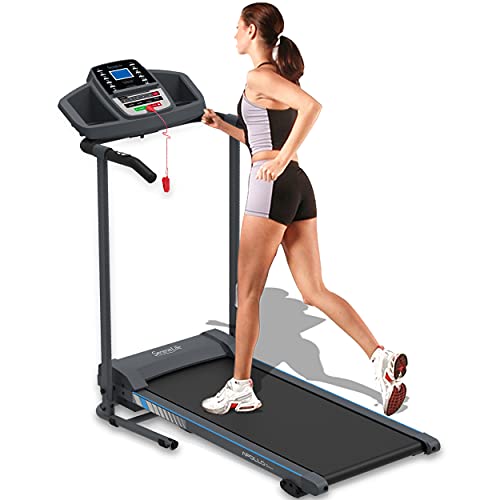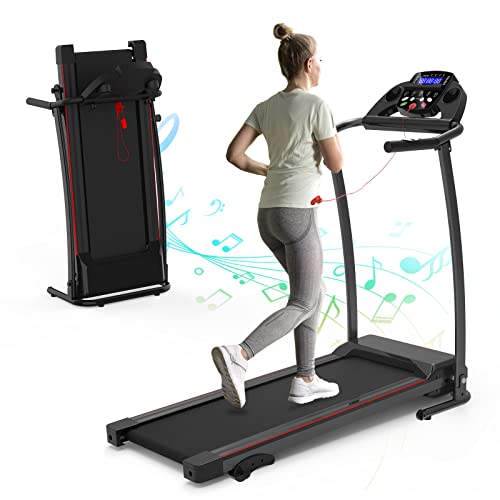You'll Be Unable To Guess Is Treadmill Incline Good's Secrets
2024.07.25 14:14
 Is Treadmill Incline Good For You?
Is Treadmill Incline Good For You? You can achieve your fitness goals faster by using the treadmill's incline settings. It what is 10 incline on treadmill important to understand the impact on your muscles and joints before increasing the incline.
You can achieve your fitness goals faster by using the treadmill's incline settings. It what is 10 incline on treadmill important to understand the impact on your muscles and joints before increasing the incline.Start with a 0% incline to warm up and then increase it to 2-3 percent. Walking at this incline mimics the pace you'd walk in a short grocery trip.
Increased Calories Boiled
Walking uphill or running on a treadmill burns more calories than on flat surfaces. The incline simulates walking or running uphill which requires more muscle effort. It burns more calories particularly if the handrails are held or you use the treadmill's built-in resistance to exercise your strength.
The incline feature on the treadmill can also add some variety to your workout and prevent boredom. However, it's important to start at a low gradient and gradually increase the level as you get more comfortable with the higher intensity of your workout. This reduces the risk of injury.
Incline treadmill workouts target different muscles that include the core and legs. This creates an efficient and well-rounded exercise. For example running or walking on an incline will target the calves and quadriceps muscles, which help to strengthen the lower body. Walking on an angle targets the glutes and hamstrings, which help tone the upper leg and hips.
A treadmill with an inclined feature can lessen the impact of running or walk on the knees. When you enter the treadmill with an inclined surface there is less space between your foot and the ground. This decreases the stress put on the bones in joints, making the treadmill exercises with an incline ideal for people with joint discomfort.
Additionally, incline treadmill workouts are effective for people who have trouble losing weight through diet alone. To lose weight, you have to create a calorie deficit by burning more calories than you consume. Walking or running on an incline on the treadmill can help you achieve this goal by burning more calories, which in turn aids in sculpting your legs and build muscle faster. It is important to keep in mind that the majority of calories you burn during exercise are glucose (blood sugar), not fat. Running or walking uphill can cause higher blood sugar levels. This is particularly important when you're on medication for diabetes or have a condition that alters the metabolism of glucose.
Increased Tone of Muscle Tone
The treadmill incline exercises will help you burn more calories and tone your legs and glutes. These exercises also strengthen your muscles, which helps improve your posture and build strength. This can also help with your balance and coordination. Walking or running up a steep incline will increase the amount of upper body movement, which helps you burn more calories.
The incline feature of most treadmills lets you increase the intensity of your cardio exercise without having to alter the speed. This is a great option for those who have difficulty with high-speed exercise or are just beginning to get into fitness, as it reduces the chance of injury. This workout also enables you to enjoy the same health benefits as regular running, like increased cardiovascular health and lower blood pressure, without having to be at the highest intensity of physical activity.
You can also boost your endurance and stamina by incorporating incline walking into your daily routine. This will make you feel more energized and confident while exercising and allow you to exercise for longer durations of time.
Running and walking on a slight incline can also cause your heart rate to rise, which is beneficial for cardiovascular health. However, it's important to keep in mind that if you're not used to training on an incline, it is recommended to start at a low-intensity amount and gradually increase the intensity as time passes. Monitor your heart rate to make sure you're not putting your body under too much stress. This is especially crucial if this is your first time training on incline.
Running at a steady pace on a flat surface can become boring for a majority of people However, by increasing the slope you are forcing your body to work an entirely different set of muscles. This makes the workout more enjoyable and difficult, but it also promotes muscle growth.
Treadmills are built to accommodate the incline of exercises, and many feature handrails that can be utilized to work out the upper body and the legs. Most models have a heart rate monitor which allows you to determine whether you're exercising too intensely. This is crucial for those who are just starting out, as it will avoid injuries such as straining your back or knees.
Increased heart rate
Incorporating the incline portion of your treadmill exercises is among the most efficient methods to burn calories, build lower body strength and tone your legs. It also improves your cardiovascular system and boosts your VO2 max (maximum oxygen consumption).
Walking or running on an incline on a treadmill or exercise path outdoors can add a new level of difficulty to your workout. As your muscles and joints work harder to adjust to the increase in elevation and your heart rate increases, your heart rate also goes up. Walking on an incline also makes your feet land at a gradual slope, which can lessen the impact and reduce wear and tears on your knees, hips, and ankles. Many top trainers incorporate this type of training into their routines for clients to reduce joint strain and injuries.
If you combine incline treadmill exercises with a heart rate monitor or smartwatch, they can help you keep your intensity at the optimal level for your fitness goals. If you are new to incline workouts start with a slow to moderate pace. Gradually increase the incline. For an intense workout on the incline you can try interval training, which combines intervals of increased incline and flat or lower incline segments.
Incorporating an inclined slope into your workout can make treadmill walking or running more challenging, even for those who enjoy regular cardio exercise. If you walk at a steady speed of 3mph, you'll burn an additional 200 calories exercising at an angle. If you run at 6mph and maintain that speed you'll burn 228 extra calories when you run on an inclined. For beginners, it's recommended that you increase the incline by not more than 5% to avoid muscle strain or injury. Try to vary the level of incline on every treadmill session to get the best results. This will help you keep your consistency and challenge your body to keep improving over time. It's also important to choose a treadmill that is comfortable with a cushioned base and comfortable handles. This will ensure that your exercise sessions are enjoyable and safe for all ages. It will also allow you to exercise longer and work up a sweat without causing discomfort.
Reducing the impact on joints
The incline function on treadmills can give you a more intense exercise without increasing your time or speed. This feature will help you burn more calories, build your muscles and increase endurance. However there are some who are hesitant to utilize an incline setting because it could cause discomfort or injury to the knees, hips and lower back. To avoid these problems, use the incline function correctly and increase your gradual incline as you gain strength and endurance.
Inline training is more effective for activating a variety of muscles than running on a flat surface, including the calves, hamstrings and glutes. It helps to tone these muscles and improves lower body strength and overall muscle definition. In addition, incline training targets the core, helping you to improve your posture and balance. It's a great option for people who have low back pain and can't get on the floor to do traditional exercises for the core.
A slight slope on a treadmill can reduce the strain on your hips and knees while still providing a great workout, says orthopaedic surgeon Kevin Plancher of Plancher Orthopaedics & Sports Medicine. Running at an angle that is slight can help avoid shin splints, and it improves endurance in comparison to running on flat surfaces.
A slight incline can reduce the chance of injury in other joints, such as your ankles and your feet. Physical therapists often recommend the incline feature to patients suffering from osteoarthritis of the knee. It has been proven that it reduces discomfort and improves the quality of life.
Be cautious when using the incline function on treadmills. You should not put too much pressure on your knees and hips. Too much incline could cause injuries from overuse because the muscles in the knees and hips have to exert more effort to control movements. This can result in joint pain and injury.
If you're not sure how to set up your inclined, a trainer or healthcare professional can assist. It is essential to start with an initial low incline and gradually increase it as your body adjusts to the increased intensity of the workout. Additionally, you should always warm up prior to beginning an incline workout to prepare your muscles for the increase in workload.
